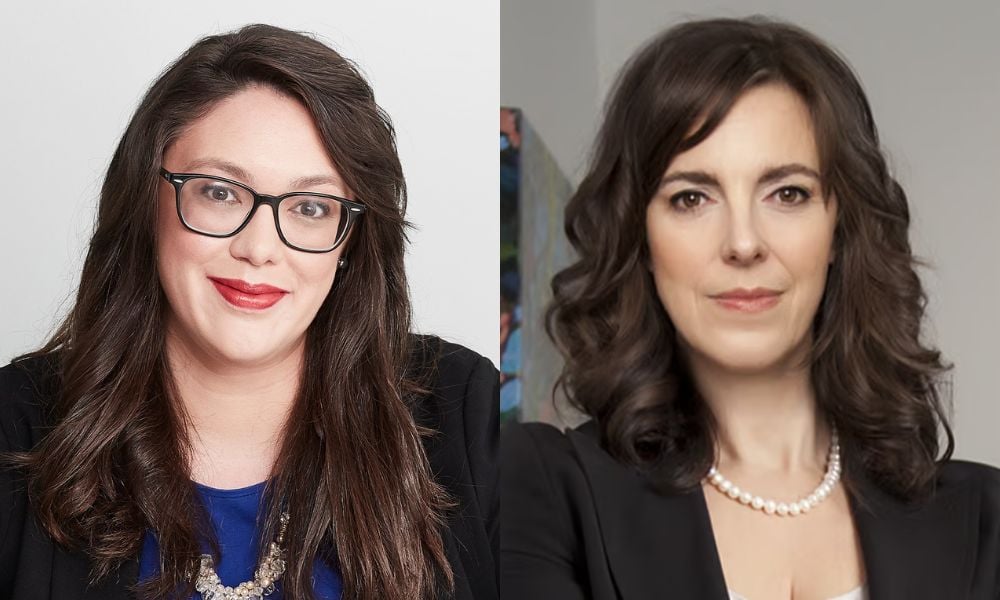
Employment lawyers explain why profession's hierarchy still fuels abuse and discourages reporting

The legal industry in Canada is beginning to reckon with workplace abuse, but progress has been slow, and significant cultural and structural challenges remain, employment lawyers say.
While no definitive data exists pointing to abuse’s pervasiveness in law, the situation is at least the same compared to other industries, says Elizabeth Bingham, an employment lawyer and workplace investigator at Rubin Thomlinson LLP.
“I think we can say anecdotally that it's at least as pervasive as bullying, harassment, and discrimination within workplaces in Canada in general. And there are reasons to suspect that it might be either more common or less reported within law firms than it is within other industries,” she says.
Bingham says the legal profession has never had a #MeToo moment of its own, adding that certain features of the profession act as barriers to progress.
“Law tends to be an insular and hierarchical profession, where you really depend on whom you know and your personal connections with people. It's hierarchical within law firms in terms of how people progress up the ranks.”
The underrepresentation of women and minorities within senior roles at law firms also contributes to the problem.
“All of these things working together present risk factors for bullying and harassment to happen and not to be reported,” Bingham says.
Despite this, she sees signs of improvement.
“I think that we are seeing a little more attention being paid to this issue… We've seen law firms engaging in training on this issue and having policies on this issue. I do think… there has been a response over the last five to 10 years.”
Employment lawyer Sara Forte says the growing visibility of abuse might give the impression that it’s on the rise.
“What I think we're seeing is more understanding of what harassment and discrimination mean and how they manifest in legal workplaces,” Forte says.
She notes that more individuals are stepping forward to file complaints, and regulators are beginning to respond more seriously.
“That might make it seem like there's more, but I think what we're seeing now is these things coming to light as opposed to living in the shadows, which is what they would have done at the start of my career… 21 years ago.”
Both Forte and Bingham say the structural conditions that enable abuse in law remain entrenched.
Forte says that the profession’s hierarchy creates power imbalances.
“The legal profession’s hierarchical set-up with large power imbalances within the organization … makes bullying and harassment more likely. It's an environment that can foster that kind of conduct.”
Both lawyers say this hierarchy can reinforce silence and discourage reporting. Forte adds that alcohol consumption is an essential factor that is often overlooked.
“Client and firm events that centre around alcohol consumption are still prevalent in our industry. Alcohol consumption has been found in studies to be a risk factor for harassment, and this definitely lines up with my experiences advising lawyers and clients on harassment incidents and as a workplace investigator,” Forte says.
However, Bingham says newer generations of lawyers may be starting to push back. They’re more inclined to question how anti-abuse measures are applied in practice – not just whether a policy exists.
“What are your definitions of discrimination? What does harassment look like? How do those policies work in reality?” Bingham says these are some of the questions she hears young lawyers raise.
“There is a greater push to have these kinds of programs be effective… as opposed to simple box-ticking.”
She adds that this generational shift may affect workplace culture and who stays in the profession.
Younger lawyers, Bingham says, value work-life balance more.
“If you add experiencing harassment or bullying on top of that, that’s even more reason for them to say, well, this just isn't worth it,” Bingham says.
Legal employers must have anti-harassment policies – but the quality and awareness of those policies varies, says Forte.
“In British Columbia, it is a legal requirement under WorkSafeBC to have a bullying and harassment policy for every employer, which would include both law firms and legal organizations,” she says. “But not every policy is created equal.”
She says policies only make a difference if employees know they exist, understand them, and receive training on how to apply them.
“Having a policy alone isn’t, in my view, enough to make a difference in preventing harassment and discrimination.”
Training, too, offers opportunities for improvement. Bingham says the most effective efforts are interactive, in-person, and implemented across the organization.
Forte says that one of the most promising tools is bystander training, which she implements through her initiative, Stand Up Teams.
Traditional training, she says, often misses the mark.
“In traditional training, it's focused on harassers (you should not do this), and victims (you should report)… But the whole rest of the workforce is not being spoken to.”
Bystander training, she says, closes that gap.
“You help everyone in the workplace learn to identify what bullying and harassment and discrimination might look like at work. And then you give a whole range of actions that bystanders can take… that range from very indirect… like recording something… to the most direct… like intervening in the moment,” she says.
She adds that the goal is not just awareness – but action.
“There's always something that we can do other than do nothing, which is the typical way that bystanders have responded to these kinds of things. ‘It's not my business, do nothing.’”
Both lawyers believe change is possible but requires the right structures, leadership, and cultural pressure.
“That commitment has to come from leadership and then trickle down,” Bingham says.